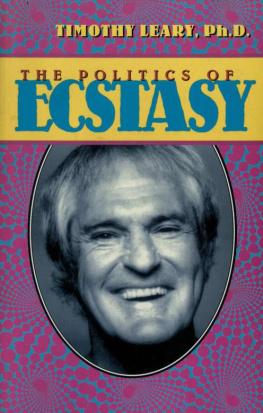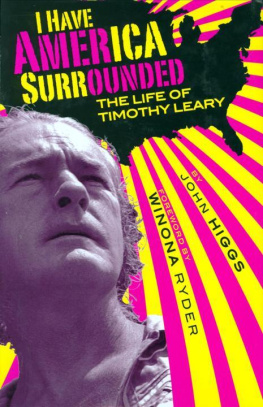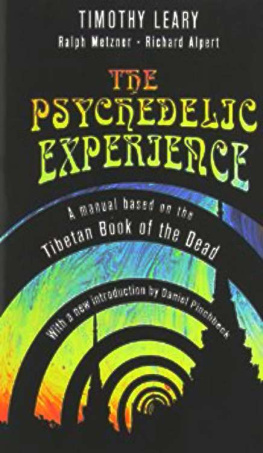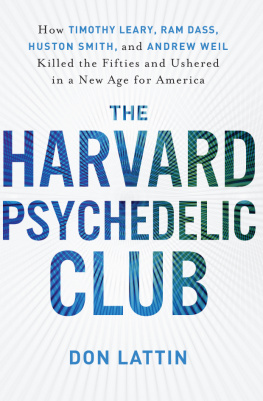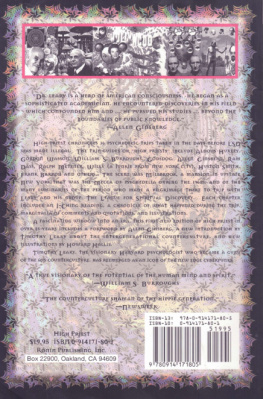Andrew Weil when he graduated from Harvard, 1964
Huston Smith and family, 1920s
Huston Smith on TV, 1958
Timothy Leary at a Boston Club in early 1966
Susan Leary and Richard Alpert in May 1963
Huston Smith in the 1960s
Ram Dass in the garden of David McClelland, 1975
Andrew Weil, in the early 1970s,
on his pilgrimage to South America
Timothy Leary announcing his candidacy for
governor of California, May 23, 1969
Andrew Weil at his Arizona ranch
Timothy Leary and others at a reunion in 1996
Huston Smith
T his book is the story of three brilliant scholars and one ambitious freshman who crossed paths at Harvard University in the winter of 196061, and how their experiences in a psychedelic drug research project transformed their lives and much of American culture in the 1960s and 1970s. Its about the intersecting life stories of Timothy Leary, a research psychologist and proponent of enlightenment through LSD; Huston Smith, an MIT philosophy professor and widely read expert on the worlds religions; Richard Alpert, a Harvard psychology professor who traveled to India and returned as Ram Dass; and Dr. Andrew Weil, a Harvard Medical School graduate who became the nations best-known proponent of holistic health and natural foods.
They came together at an extraordinary time and place in American history. It was the end of the 1950sa decade defined by conformity, consumerism, political paranoia, and the just-discovered nightmare of global nuclear annihilation. It was the beginning of the 1960s, which would see its own horrors and divisive politics but was somehow redeemed by a new spirit of optimism, innovation, and hope. Massachusetts senator John F. Kennedy, a Harvard graduate, had just been elected president of the United States, making him the youngest man to ever hold that office. Kennedy put together a cabinet by cherry-picking Harvards best and brightest.
Was there a reason these four men came together at this time and place? Perhaps its just a coincidence, but some extraordinary spirit rose out of Harvard in the fall of 1960. Somethings happening here. What it is aint exactly clear. Timothy Leary discovers the wondrous world of magic mushrooms during his summer break in Mexico, just as seventeen-year-old Andrew Weil is getting ready to come to Harvard to study botany. Aldous Huxley, the great British novelist and student of human consciousness, just happens to be lecturing that fall at nearby MIT. Huxley hears about Leary, then introduces Leary to his old friend Huston Smith. Allen Ginsberg, the Beat poet who seems to pop up everywhere in the fifties, sixties, and seventies, is crashing at Learys house that fall. One of Learys colleagues in the Harvard psychology department, Richard Alpert, is, when the merriment begins, on loan to the University of California at Berkeley, but he lays the groundwork for a psychedelic drug culture that is about to burst forth in Boston, San Francisco, and, from there, around the world.
They came together at a time of upheaval and experimentation, and they set the stage for the social, spiritual, sexual, and psychological revolution of the 1960s. Smith would be The Teacher, educating three generations to adopt a more tolerant, inclusive attitude toward other peoples religions. Alpert would be The Seeker, inspiring a restless army of spiritual pilgrims. Weil would be The Healer, devoting his life to the holistic reformation of the American health-care system. And Leary would play The Trickster, advising a generation to turn on, tune in, and drop out.
They would help define the decade, so much so that John Lennon would write two Beatles songs for their storys soundtrackTomorrow Never Knows, about his Leary-inspired acid trip, and Come Together, originally conceived as a campaign song for The Tricksters whimsical race against Ronald Reagan for governor of California. One thing I can tell you is you got to be free. Other tunes would be cut by the Jefferson Airplane, the Grateful Dead, and the Moody Blues, whose song The Legend of a Mind would let us know whether Timothy Leary was dead, or just on the outside, looking in.
They came together, then drifted apart, but the cultural changes they wrought are still very much with us today. There would be a time of joy, a time of peace, and a time of love. There would also be times of backstabbing, jealousy, and outright betrayal. A time to dance. A time to mourn. And it would take Richard Alpert more than one lifetime to forgive Andrew Weil for what he did to him and his career back at the dawning of the Age of Aquarius.
Leary would go on to become one of the most revered and reviled symbols of the 1960s. Huston Smith would enthusiastically join Learys psychedelic crusade, only to go his own way when the party got a little wild for an ordained, and happily married, Methodist minister. Richard Alpert, as Ram Dass, would continue to struggle with a voracious omni-sexual appetite. Andy Weil would play hardball in his campaign to get Alpert and Leary kicked out of Harvard, only to replace them in the 1970s as the new ringmaster of the drug culture.
Smith, Leary, Alpert, and Weil were all career-driven, linear-thinking intellectuals before their consciousness-expanding encounters with psilocybin mushrooms, LSD, and other psychedelic drugs. After the ecstasy, they all turned from intellect to intuition, from mechanistic thinking to mysticism, from the scholarly to the spiritual, from the scientific to the shamanic. The men of the Harvard Psychedelic Club, each in his own way, changed the way Americans think, practice medicine, and view religion; that is, they changed nothing less than the way we look at mind, body, and spirit.

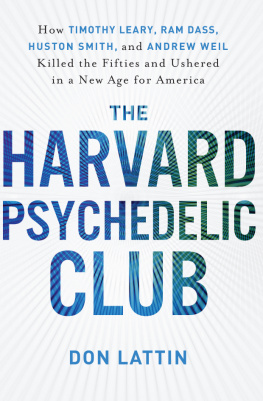
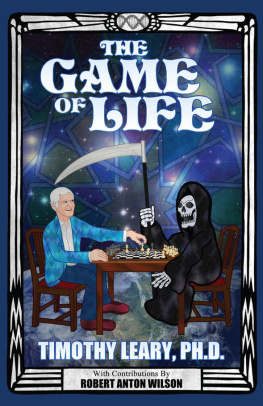
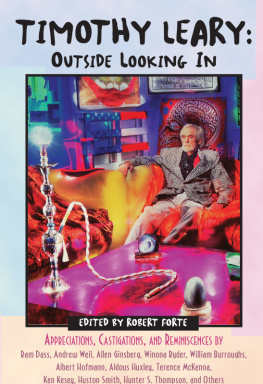

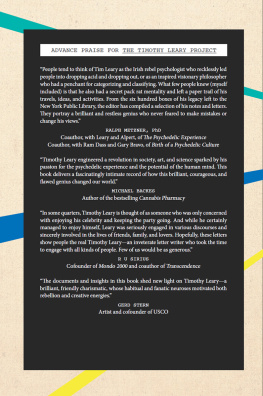
![Robert Greenfield - Timothy Leary: A Biography [excerpts]](/uploads/posts/book/113331/thumbs/robert-greenfield-timothy-leary-a-biography.jpg)
